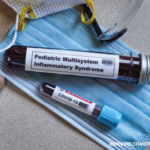 ACR CONVERGENCE 2020—Among the many ways in which the COVID-19 pandemic has changed the face of modern medicine is the emergence of multisystem inflammatory syndrome in children (MIS-C), a rare but serious condition that shares many features of Kawasaki disease (KD). With this topic in mind, leading pediatric experts from around the world came together Nov. 8 to deliver the presentation titled, Pediatric COVID-19 Hyper-Inflammation: Decipher Clues & Enhance Collaboration.
ACR CONVERGENCE 2020—Among the many ways in which the COVID-19 pandemic has changed the face of modern medicine is the emergence of multisystem inflammatory syndrome in children (MIS-C), a rare but serious condition that shares many features of Kawasaki disease (KD). With this topic in mind, leading pediatric experts from around the world came together Nov. 8 to deliver the presentation titled, Pediatric COVID-19 Hyper-Inflammation: Decipher Clues & Enhance Collaboration.
Differentiating MIS-C from KD
Angelo Ravelli, MD, a professor of pediatrics at the University of Genoa and head of the Rheumatology Division at the Giannina Gaslini Institute, Genoa, Italy, described the initial emergence in April 2020 of increased admissions at Italian hospitals of children with clinical symptoms and signs resembling KD. However, among these 149 patients, 53 showed baseline characteristics and clinical features that were not entirely consistent with KD. For example, this cohort of patients was older than the typical KD patient (i.e., generally older than 5 years); showed evidence of myocarditis, pericarditis, heart failure, shock and meningeal signs (which are not as commonly seen in KD); and had lower rates of coronary artery aneurysm. In addition, there were several features, including lymphopenia and relative thrombocytopenia, that are almost never seen with KD except in cases of macrophage activation syndrome (MAS) or toxic shock syndrome (TSS).
In the weeks and months since the identification of these patients, definitions for the entity, now called MIS-C, began to be developed by the Centers for Disease Control & Prevention (CDC), the World Health Organization (WHO), the Royal College of Paediatrics and Child Health (RCPCH) and others. Although the exact case definitions vary by organization, the ACR Clinical Guidance on MIS-C describes it as a condition characterized by fever, inflammation and multi-organ dysfunction that manifests late in the course of SARS-CoV-2 infection.1
Dr. Ravelli posed a question on this topic pondered by clinicians and researchers around the world: Is MIS-C a form of KD, or is it an entirely different illness with some similarities to KD? Both conditions share multiple features, such as rash, fever, conjunctivitis and pharyngeal and oral erythema. Many patients with MIS-C also seem to respond to treatment with intravenous immunoglobulin (IVIG) and corticosteroids in a somewhat similar fashion. However, the differences in age of onset and the hematologic parameters that distinguish MIS-C from KD warrant further explanation.
One striking fact is the temporal relationship between the peak in COVID-19 cases and, about one month later, the sharp increase in pediatric patients with MIS-C. This indicates MIS-C is likely mediated by the development of acquired immunity rather than direct viral injury caused by SARS-CoV-2. Certainly, the identification of this virus as a potential trigger for the cascade that leads to MIS-C is not impossible. For instance, in an article published in 2005, Esper and colleagues identified evidence of a novel human coronavirus called New Haven Coronavirus (HCoVNH) in the respiratory secretions of a 6-month-old patient with classic features of KD, and they further demonstrated this association by showing evidence of HCoVNH in the secretions of eight out of 11 patients with KD versus only one of 22 controls.2




